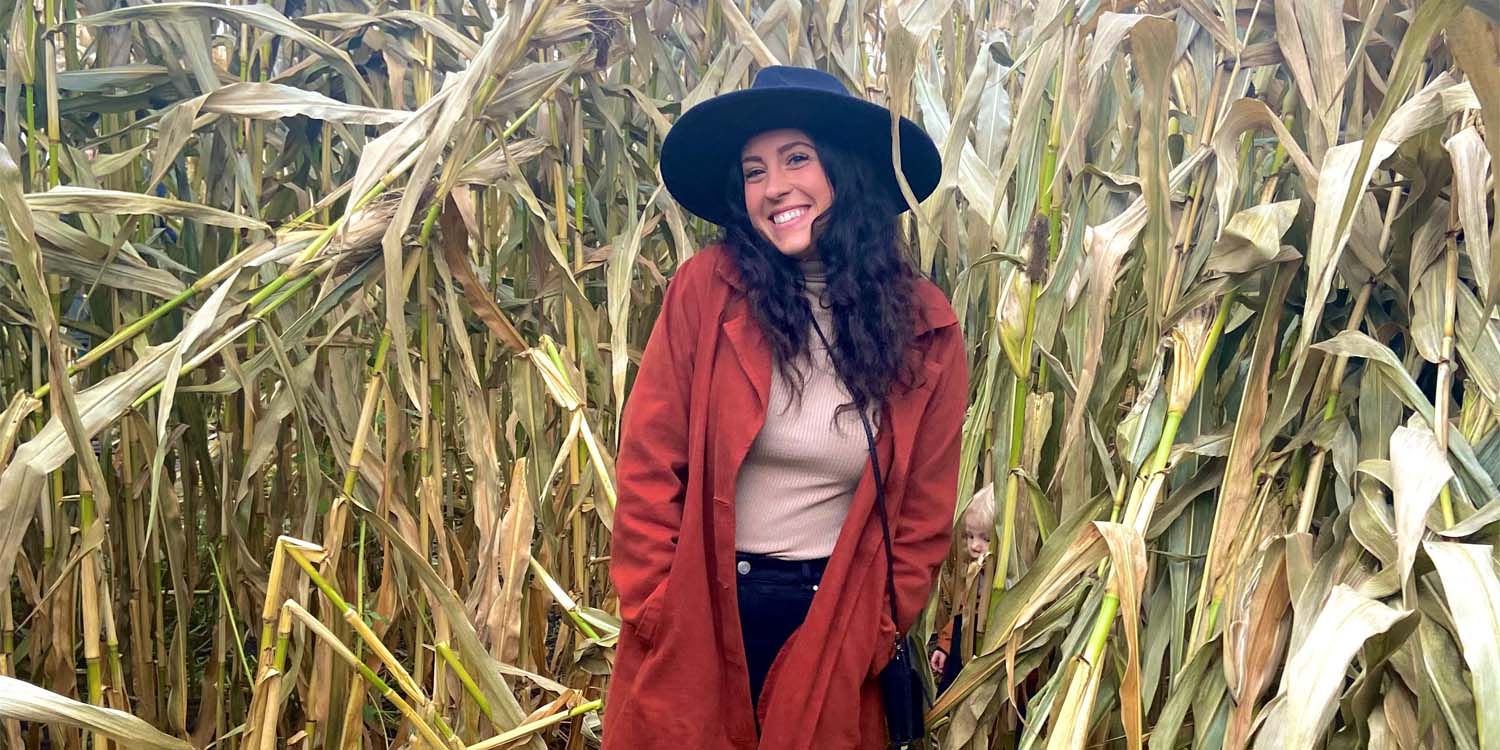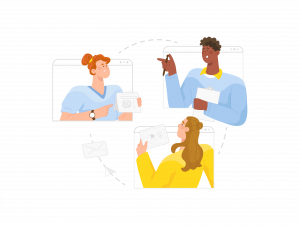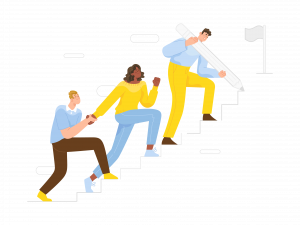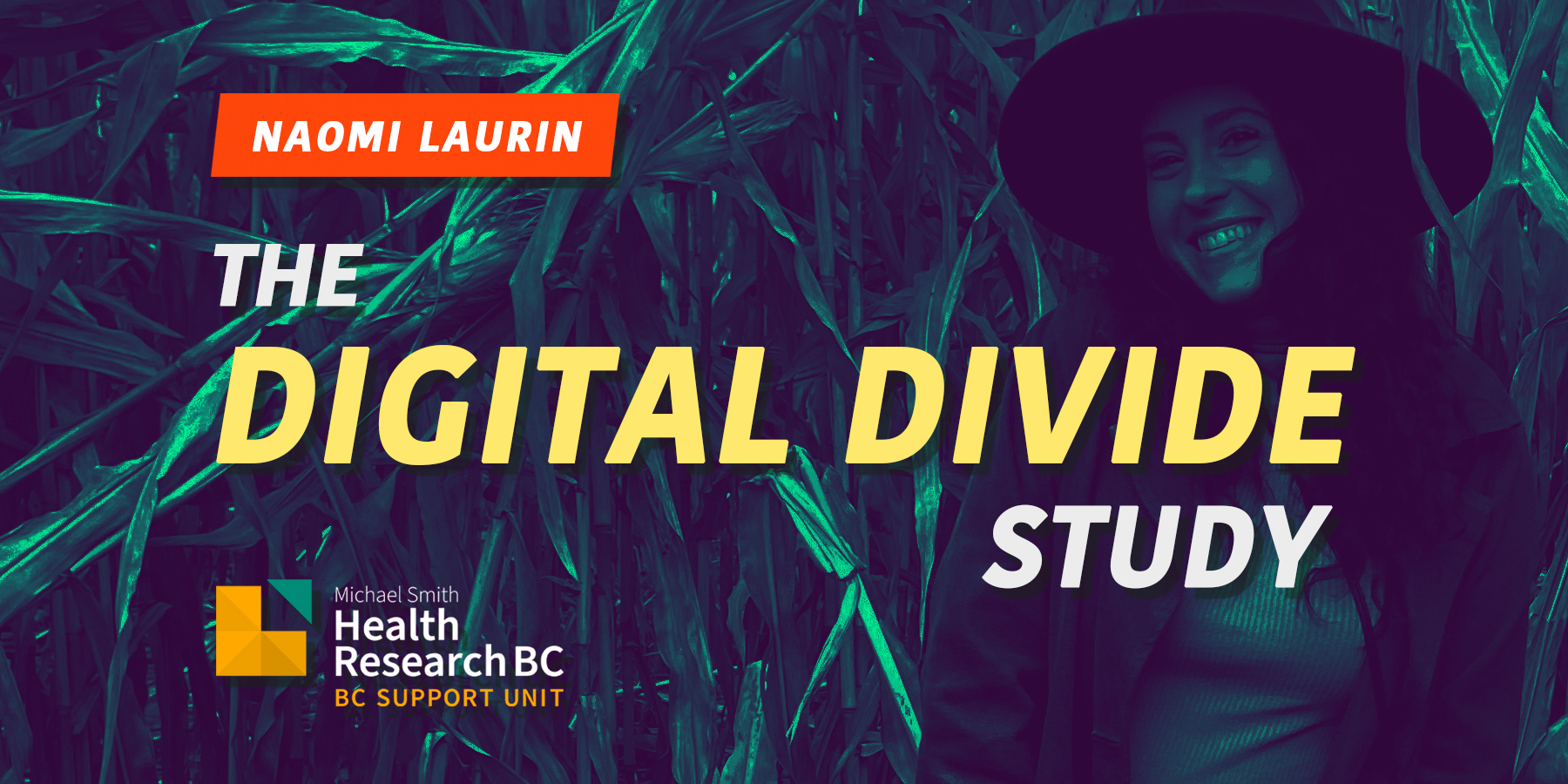About Naomi’s journey / experience
My journey with the Digital Divide Team began as a third-year undergraduate student studying Psychology at the University of British Columbia, Okanagan campus. I am fascinated in understanding the relationship between mental health and one’s identity. This interest helped to shape the direction of my undergraduate degree, and now, graduate degree in Clinical Social Work at UBC Okanagan. As part of the Indigenous Research Mentorship program at the University of British Columbia Okanagan, I was fortunate to join Dr. Shelly Ben-David’s lab and the Digital Divide team. The Indigenous Research Mentorship (IRM) program provides students with the opportunity to engage and actively participate in research over a four-month period. It allows for students to experiment with an area of interest and to gain experience in a research setting while completing one’s degree. I stayed on over the summer as a full-time research assistant and am now a graduate student in Dr. Ben-David’s lab.
As a part of my work with Dr. Ben-David, I’ve been helping with the Digital Divide Study. This study looks at how youth make decisions about accessing digital mental health technology, and how these decisions intersect with their identities. On the study, I’ve worked on data transcription, data analysis, and the knowledge translation activities.

In this blog, I’ll share my experiences working on the Digital Divide study, and doing qualitative research for the first time. I’ll highlight the different phases (data collection, transcription, data analysis) of the study.
Data collection
When I joined the Digital Divide study, the research team was near the end of interviewing 45 participants. Our four youth research assistants (Gurvaan Mann, Mikaela Basile, Julia Gray and T Schwab) conducted the interviews. They were paired with social work graduate student coaches (Sara Kolomejac and Melissa Campos) to help with this process.
I came away from each and every interview thinking that it was a positive experience and came away feeling empowered with so much information that will hopefully go towards improving mental health in BC for youth.
One youth research assistant Mikaela Basile speaks about her experiences conducting the digital interviews: “I think having the face to face virtual interviewing and being able to be involved in that definitely made me feel like a core part of the study team. I could directly see when a youth felt comfortable, when they felt like they could talk to me about what video game they had been enjoying lately, when they told me what they struggle with and how they cope with those struggles, and when they felt comfortable enough to ask for clarification on a question. I came away from each and every interview thinking that it was a positive experience and came away feeling empowered with so much information that will hopefully go towards improving mental health in BC for youth. I really appreciated all the different perspectives of each youth.

“A couple things that I learned while interviewing the youth […] was that they appreciated having someone interview them that was similar to them (young person, lived experience of mental health issues, same gender or race). It made them feel more comfortable which allowed us to get more information with them and explore the study questions more. Access is definitely not the same across BC – there are a lot of differences when a youth is in a rural community (e.g. internet not as great or more expensive, not as many mental health services or youth centers and not as many mental health professionals that are IBPOC* and/or queer, and the worry that someone they know will see them accessing a service). Youth appreciate flexibility with having both in person and virtual options. I saw a good amount of youth that liked in person more and a good amount that liked virtual more.”
*Indigenous, Black, and Persons of Colour
Sara Kolomejac speaks about her experience in supporting and coaching the youth research assistants throughout the interview process: “The training experience involves guiding youth research assistants on how to facilitate qualitative interviews. It’s a two-way dialogue and we learned from each other on how to create a great interview experience.”
Transcription
My first role within the team was transcribing the participant interviews. This means writing down exactly what is said in an audio or video format. In our case, the audio was the participant interviews.
It was my first time joining a lab focused on youth’s experiences accessing digital mental health technology. It was nerve-racking, but extremely exciting as this was completely new territory to me. I had never had the opportunity to work with a multi-disciplinary research team before, or had any experience with qualitative research. I had no idea how much time transcribing an interview would take. I quickly learned it was not a task that you could rush.
Youth researchers were engaged throughout this process, which aided greatly. They were able to pinpoint perspectives and experiences that may have gone unnoticed or misinterpreted without them.
It took time to get into the right headspace, to accustom oneself to the voices of the interviewer and interviewee and then, to transcribe it all. It was a unique experience–almost like being a fly on the wall and getting to listen to a conversation unfold. Julia Gray, another youth research assistant, commented on her experience with transcription: “I had an incredible experience working transcribing for the Digital Divide study. I felt well prepared through training and was provided opportunities to debrief on the subject matter through team meetings which allowed us to discuss learnings and advice. The team allowed for safe and rich discussions to take place. I feel as though I learned valuable skills regarding the transcription process itself, the use of proper technology, and how the information is used after being transcribed. I am very grateful to have had this opportunity!”
Data Analysis
You become an agent of change by interpreting and representing someone’s story through the patterns you’re coding.
My role in analysis presented itself as a large learning curve. At times I felt overwhelmed. It took a lot of trial and error to find the best way to organize the data. Something that really stood out for me while engaging in this process was how much responsibility there is in doing this work. You become an agent of change by interpreting and representing someone’s story through the patterns you’re coding. This process was supported as a team.
It was important to all of us that we were accurately illustrating the youth’s experiences. Our analysis team was made up of undergraduate and graduate students, and youth research assistants. We engaged in deep discussions about what participants had said, about our interpretations, and about how best to move ahead.
We collaboratively worked together, ensuring that we painted a descriptive and accurate picture of each experience. Youth researchers were engaged throughout this process, which aided greatly. They were able to pinpoint perspectives and experiences that may have gone unnoticed or misinterpreted without them. We ensured that our check-ins and team discussions reflected what the youth researchers heard throughout interviews and experienced in their personal lives.

Chantel Breau, one of our graduate student analysts, summarizes the process beautifully: “We did not go looking for themes; themes were vocalized by the participants and grouped them together by highlighting paragraphs (i.e. references) and assigning them to the appropriate code. Codes were discussed in team meetings (i.e. consensus meetings) to ensure that the themes were not biased by the research assistants, as well as to ensure that the information collected was accurate and representative of the person putting the information forward; we did not want to misrepresent someone. Throughout the whole process, I was supported by a team that also advocated for the importance of letting youth speak for themselves and amplifying their voices to be heard.”
Conclusion
My understanding of what it meant to work collaboratively in research expanded beyond what I ever could have imagined. Highlighted throughout the process was the direct involvement from the youth research assistants themselves. Usually, through research, the voices of researchers and educators are amplified. In the Digital Divide study, the voices of the youth were amplified–the people who we intended to learn from. This is something that I believe can at times get lost in translation, from the participants we interview to the academic world. I hope to continue to conduct research in my future, and to follow the lessons I have learned. The experts of such knowledge, specifically regarding mental health, are the people with direct experience. The practice of translation needs to hold through to the end.
Stay tuned for our next blog, which highlights the preliminary findings from our digital divide qualitative study!
About Naomi
I am currently a first year Clinical Social Work student at the University of British Columbia, Okanagan campus. I completed my bachelor’s degree in Psychology in 2021 at UBC. I am a research assistant in Dr. Ben-David’s youth mental health lab. I have completed additional certificates in trauma-informed care, applied suicide intervention, borderline personality disorder and addictions. I have been a volunteer firefighter within my rural community in BC for the past 5 years, and I am a licensed First Responder.




Excellent!!